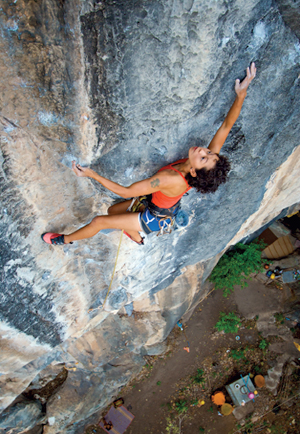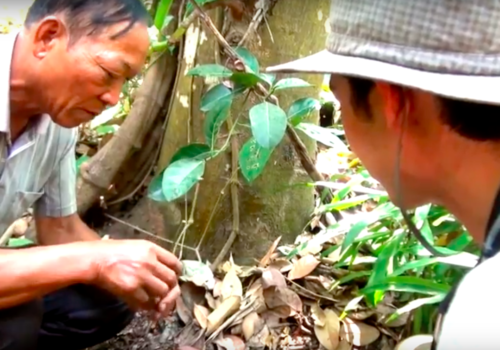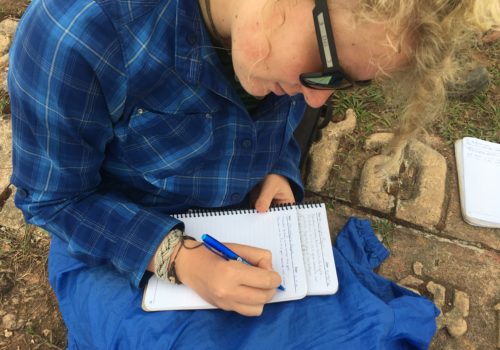
Pi Kat, businesswoman, climber and occasional ISDSI Field Instructor, climbing at Crazy Horse. (Photo credit: Josh and Dan Morris)
A core part of what we do at ISDSI is to teach students about teamwork, leadership, and decision making. We believe that part of creating a more sustainable world is equipping students with practical skills in how to work and lead, so that their passion for sustainability can be transformed into action.
A great way to combine these lessons is through the challenge of rock climbing. We are fortunate to be near a world-class climbing destination, and have helped a bit over the years to develop Crazy Horse, from crag clean-ups to trail building to some initial meetings with local officals. Crazy Horse is a community effort spearheaded by the folks at Chiang Mai Rock Climbing Adventures. Each semester, ISDSI students go out to Crazy Horse to climb and have an amazing time. Josh Morris and Khaetthaleeya Uppakham (Pi Kat) have done a great job developing the crag into not only a world-class climbing destination, but also an example of how to develop a sustainable ecotourism destination. We’ve worked with both Josh and Kat, and Kat is a field instructor for ISDSI when she has time.
Climbing Magazine has featured them in an article, The Other Thailand, talking not just about the climbing, but also the history and unique development of Crazy Horse.
Leave behind Thailand’s farang-packed Tonsai, and you’ll discover Crazy Horse, a quiet crag that’s redefining sustainable tourism in Asia…
Crazy Horse Buttress rises above rice paddies 25 miles from the culturally vibrant city Chiang Mai. Named for its principal formation’s striking resemblance to an equine head, Crazy Horse comprises a cluster of 15 quiet cliffs first climbed in 1998 and now boasting 97 single-pitch and 15 multi-pitch routes. Spanning 5.6 to 5.13c, the climbs tackle everything from technical slabs, to overhanging tufas, to multi-chambered, stalactite-dripping caves — not to mention the wealth of untapped rock.
However, the cliff’s true essence lies in the tight-knit community of locals and foreigners who’ve developed it. With an emphasis on social and ecological sustainability, the motley Crazy Horse crew has endeavored to keep this a quality destination for the long haul. In fact, many climbers now hold up Crazy Horse as a case study on how climbing tourism can positively affect a foreign community. Turns out, one of the most important factors is for the locals to come to love climbing, too.
If you’re interested in sustainability, ecotourism and (of course) climbing, jump over and read “The Other Thailand.”



